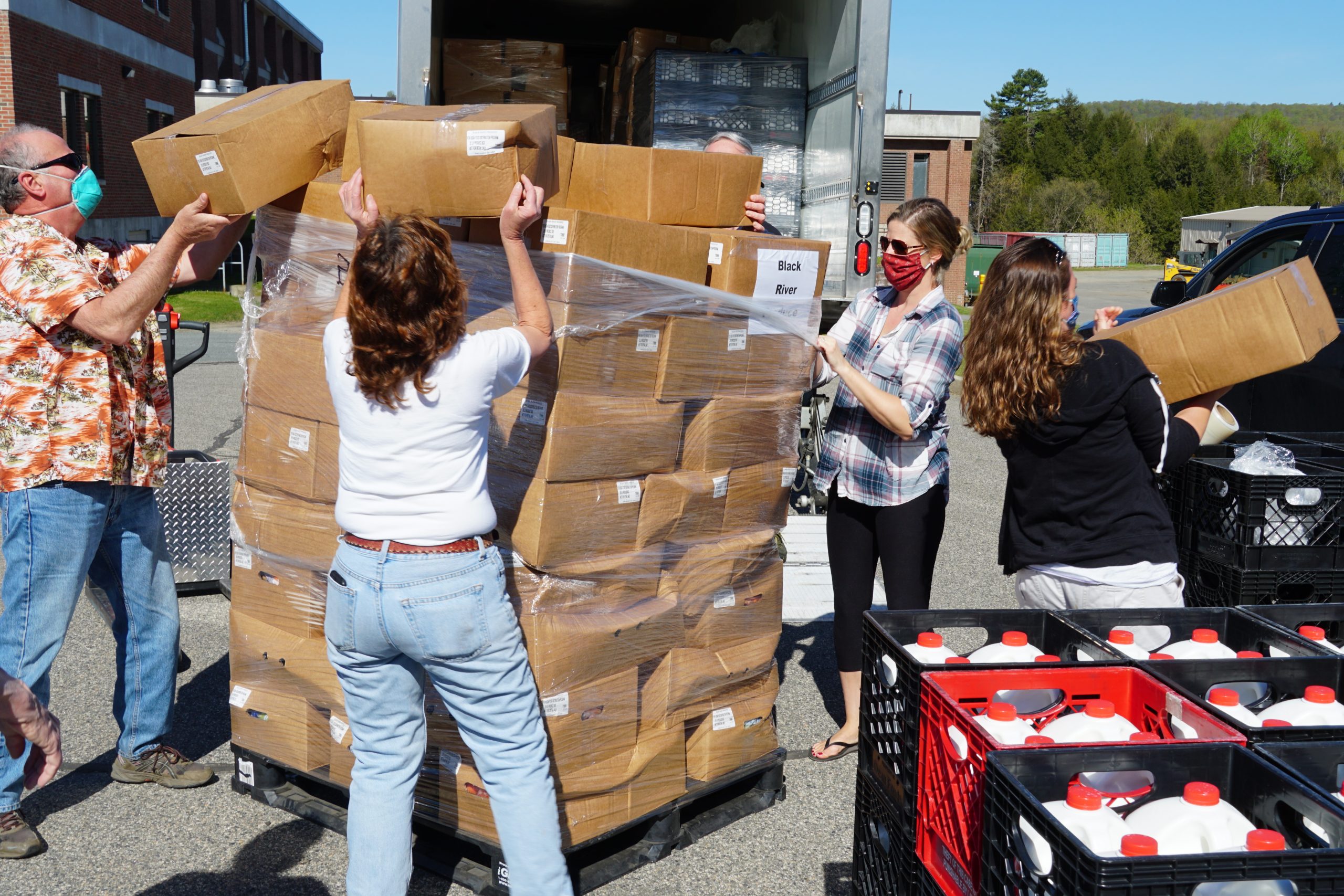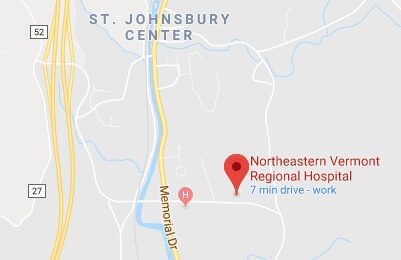Food Insecurity on the Rise during COVID-19

On the third Thursday of every month, at about 9 a.m., volunteers at VeggieVanGo, a partnership between the Vermont Foodbank and Northeastern Vermont Regional Hospital, distribute food to hundreds of families in our community. Each person is asked, “How many families are you picking up for today?” But instead of picking up fresh fruits and vegetables as well as easy and healthy recipes in the hospital’s cafeteria, people are now, due to COVID-19, waiting in line in their cars. It isn’t exactly the same, people can’t chat with other community members as they wait, but it’s an efficient system that allows them to get free food for the month.
Prior to COVID-19, about 89 percent of Vermont’s population hadn’t had to worry whether they would run out of food before getting money to buy more. The remaining 11 percent were food insecure or unable to provide adequate food for one or more household member due to lack of resources.
Since the pandemic, the Vermont Foodbank says they have seen up to an 800 percent increase in the number of people reaching out for help. Recent data from Feeding America shows that in Vermont, food insecurity rates have increased by 46 percent, and child food insecurity has increase by 60 percent.
Not only are people who have been visiting food shelves needing more assistance, but people who hadn’t previously needed assistance are also reaching out for the first time looking for support.
Nicole Whalen, Vermont Foodbank Director of Communications and Public Affairs, said pre-pandemic, many families weren’t in need of food assistance or were right on the edge of making their budget work and weren’t in the position to weather an unexpected expense.
“We saw the pandemic create that unexpected expense for many people,” Whalen said.
Normally, The Vermont Foodbank distributes one million pounds of food in a month. In April, the Foodbank distributed about 1.8 million pounds, an 83 percent increase, Whalen said.
Food banks and food shelves have not only had to adjust for the number of people requesting help, but have also had to adjust the way food is distributed as well. Whalen said traditional methods of distributing food by bringing people together for community meals or through a client-choice model promote the spread of COVID-19.
Instead, pre-packed boxes and bags, and prepared foods to go, are being offered. These new ways of distributing are much more labor intensive, Whalen said, which means needing more people to help prepare and pack the food in a safe way that doesn’t contribute to the spread of the virus.
“We’re trying to think creatively we can get food into the community that doesn’t collapse our already overburdened charitable food system.”
It’s apparent that the level of increased need will be sustained for a lot longer than the immediate health crisis taking place, Whalen said. She added that it will take additional funding over a significant period of time to make sure as a community those needs can be met.
Last month food security organizations in Vermont together wrote a letter to the State legislature asking them to prioritize food security in their COVID response funding. As of the time this article was written, lawmakers sent a proposed COVID-19 relief spending package to Gov. Phil Scott’s desk that included several million dollars in aid for The Vermont Foodbank.
The letter also stressed the importance using this as an opportunity to work toward reducing food insecurity in the future as well, stating that it would be unacceptable to return to a “’tolerable’ number of hungry Vermonters.” The best way to achieve this, Whalen said, is to increase funding for 3SquaresVT, Vermont’s federal Supplemental Nutrition Assistance Program. The letter advocated for the state to invest in expanding outreach efforts for 3SquaresVT.
To help with food insecurity in your own community, Whalen said you can donate to local food shelves and food banks, join advocacy efforts and volunteer your time. She said anyone interested in advocacy efforts can sign up on The Vermont Foodbank website (vtfoodbank.org) to receive email updates about when there is an opportunity to take action. Socially distant volunteer opportunities are also available on the website, Whalen said, adding that many of the volunteer opportunities are outside and allow people to stay six feet apart.
Whalen urged anyone struggling with hunger to visit vtfoodbank.org.
“We have a team of staff that can walk you through the application to get you connected with the resources you need, including an EBT card to spend at grocery store,” she said. “It’s there for times like this. Please reach out for the help you need. Don’t wait.”
Sitemap | Privacy Policy | Site developed by Flek, Inc.
Northeastern Vermont Regional Hospital © 2020

